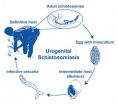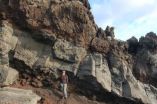(Press-News.org) Radioactivity is usually associated with nuclear fallout or comic-book spider bites, but in very small amounts it can be a useful tool for diagnosing diseases.
Small molecules containing a radioactive isotope of fluorine called "18F radiotracers" are used to detect and track certain diseases in patients. Once injected into the body, these molecules accumulate in specific targets, such as tumors, and can be visualized by their radioactive tag on a positron emission tomography (PET) scan. The 18F tags quickly decay so no radioactivity remains after about a day.
But there are only a few methods available for making 18F radiotracers. And existing methods tend to require harsh conditions that scramble the placement of a radiotracer's more delicate chemical bonds. Now, researchers at Princeton University report a route to 18F radiotracers that avoids that problem.
"It's the first method to do enantioselective carbon-18F bond formation," said principal investigator Abigail Doyle, a Princeton associate professor of chemistry.
Up to this point, radiotracers have mostly been evaluated as mixtures of enantiomers. Enantiomers are molecules that are completely identical in composition but the arrangement of atoms at the chiral center are mirror images, like how a person's left and right hands are similar, but oppositely oriented. A chiral center is an atom, usually carbon, which is connected to four different groups.
"We know in biology, small molecule interactions with enzymes often depend on the 3D properties of the molecule. Being able to prepare the enantiomers of a given chiral tracer, in order to optimize which tracer has the best binding and imaging properties could be really useful," Doyle said.
Doyle's research team developed a cobalt fluoride catalyst—[18F](salen)CoF—to install the radioactive fluoride through the ring-opening reaction of epoxides. Their method demonstrated excellent enantioselectivity for eleven substrates, five of which are known pre-clinical PET tracers.
With this new method, researchers can now test single enantiomers of existing or new PET radiotracers and evaluate if these compounds offer any advantage over the enantiomeric mixtures. Ultimately the goal is to use this chemistry to identify a completely novel PET radiotracer for imaging.
Currently there are only four FDA-approved 18F radiotracers. One of the major limitations to discovering PET tracers is the fact that the only commercially available source of 18F is nucleophilic fluoride.
Existing 18F sources are strongly basic, and during the process of making the 18F radiotracer, can cause the elimination of alcohol and amine groups and rearrange the groups around a chiral center in a process called racemization. Under Doyle's less basic reaction conditions, even alcohols and secondary amines are tolerated and no racemization is observed.
"Forming carbon-fluorine bonds by nucleophilic fluoride is challenging. One typically needs to use high temperatures or else the reactions are too slow to permit radioisotope incorporation," Doyle said. "Whereas most reactions require temperatures greater than 100 degrees Celsius, our reaction can be run at 50 degrees Celsius," she said.
Graduate students in the Doyle lab, Thomas Graham and Frederick Lambert, commuted to the University of Pennsylvania, where they conducted the radiolabeling experiments in the laboratory of collaborator Hank Kung, an emeritus professor of radiology.
"At UPenn, we worked behind lead bricks and used a very small amount of radioactivity, about how much you would give a human patient," said Graham, lead author on the article.
Small amounts of radioactivity were sufficient to develop the reaction initially but to perform imaging studies, larger amounts of radioactivity are necessary. "When you go to higher activity, that's when you do automated chemistry in a hot cell, which is basically a block of lead so you get no exposure," Doyle said.
To be useful in an industrial setting, the chemistry needs to be translated from the lab to an automated hot cell. The researchers were given access to an automated hot cell nearby at Merck's West Point, Pennsylvania site.
"The whole process of radiolabeling takes about 30 to 45 minutes when it's automated," says Graham. The set-up includes a robotic arm that delivers solutions to designated vials, an HPLC and a rotary evaporator, which are instruments for the analysis and purification of the radiotracers.
"The catalyst is very robust and the fact that we can translate the reaction directly to the hot cell bodes very well for non-experts to be able to run these sorts of reactions," Doyle said.
"We demonstrated that the radioactivity is high enough that we could actually use it for imaging. That's an exciting next step," Doyle said.
INFORMATION: END
A faster track to the tools that track disease
2014-05-21
ELSE PRESS RELEASES FROM THIS DATE:
PMS may spell menopause symptoms later -- but not hot flashes
2014-05-21
CLEVELAND, Ohio (May 21, 2014)—Having premenstrual syndrome (PMS) before menopause does not mean women will be troubled by hot flashes afterward. But they may face more menopause complaints other than hot flashes, such as trouble with memory and concentration, finds a new study published online in Menopause, the journal of The North American Menopause Society (NAMS).
The research team at the Helsinki University Central Hospital and Folkhälsan Research Institute in Helsinki, Finland, are the first to show a link between PMS and a worse quality of life after menopause. They ...
Scientist uncovers links connecting environmental changes with spike in infectious disease
2014-05-21
National Museum of Natural History scientist Bert Van Bocxlaer and an international team of researchers revealed that anthropogenic changes in Africa's Lake Malaŵi are a driving force behind the increase of urogenital schistosomiasis, a debilitating tropical disease caused by parasitic flatworms. Scientists estimate that 250 million people are affected by schistosomiasis worldwide, and 600 million more are at risk of contracting it. In some villages along the shorelines of Lake Malaŵi, 73 percent of the people and up to 94 percent of the schoolchildren are infected ...
Scaly gem discovered in South American cloudforests
2014-05-21
Field and laboratory work by Omar Torres-Carvajal from Museo de Zoología QCAZ, Pontificia Universidad Católica del Ecuador, and his former undergraduate student Simón Lobos has resulted in the discovery of a gem-looking new species of shade lizard from the cloudforests in northwestern Ecuador. This region is part of the 274,597 km2 Tumbes-Chocó-Magdalena hotspot that lies west of the Andes. The study was published in the open access journal ZooKeys.
Shade lizards (genus Alopoglossus) are widely distributed across tropical South America. They differ from most other lizards ...
Shattering past of the 'island of glass'
2014-05-21
A tiny Mediterranean island visited by the likes of Madonna, Sting, Julia Roberts and Sharon Stone is now the focus of a ground-breaking study by University of Leicester geologists.
Pantelleria, a little-known island between Sicily and Tunisia, is a volcano with a remarkable past: 45 thousand years ago, the entire island was covered in a searing-hot layer of green glass.
Volcanologists Drs Mike Branney, Rebecca Williams and colleagues at the University of Leicester Department of Geology have been uncovering previously unknown facts about the island's physical history.
And ...
The interruption of biological rhythms during chemotherapy worsen its side effects
2014-05-21
Patients receiving chemical treatment for cancer often suffer fatigue and body weight loss, two of the most worrying effects of this therapy linked to the alteration of their circadian rhythms.
The circadian system, better known as our biological clock, is responsible for coordinating all the processes that take place in our organism.
If it does not function correctly, what is known as a circadian disruption or chronodisruption, has for years been linked to an increased incidence of cancer, obesity, diabetes, depression, cognitive problems or cardiovascular diseases.
"Also, ...
New tide gauge uses GPS signals to measure sea level change
2014-05-21
A new way of measuring sea level using satellite navigation system signals, for instance GPS, has been implemented by scientists at Chalmers University of Technology in Sweden. Sea level and its variation can easily be monitored using existing coastal GPS stations, the scientists have shown.
Measuring sea level is an increasingly important part of climate research, and a rising mean sea level is one of the most tangible consequences of climate change. Researchers at Chalmers University of Technology have studied new ways of measuring sea level that could become important ...
Dam removal improves shad spawning grounds, may boost survival rate
2014-05-21
Research from North Carolina State University finds that dam removal improves spawning grounds for American shad and seems likely to improve survival rates for adult fish, juveniles and eggs – but for different reasons.
The researchers focused on a small tributary in North Carolina called the Little River, where three dams were removed in the late 1990s and early 2000s. American shad (Alosa sapidissima) spend the bulk of their adult lives in saltwater, but return to freshwater rivers like this one to spawn. While in these freshwater environments, the adult shad do not ...
Breakthrough: Nasal spray may soon replace the pill
2014-05-21
Every time we have an infection or a headache and take a pill, we get a lot more drugs than our body actually needs. The reason is that only a fraction of the drugs in a pill reaches the right places in the body; the rest never reaches its destination and may cause unwelcome side effects before they are flushed out of the body again. This kind of major overdosing is especially true when doctors treat brain diseases, because the brain does not easily accept entering drugs.
"People with brain diseases are often given huge amounts of unnecessary drugs. During a long life, ...
Seeing is a matter of experience
2014-05-21
The headlights – two eyes, the radiator cowling – a smiling mouth: This is how our brain sometimes creates a face out of a car front. The same happens with other objects: in house facades, trees or stones – a "human face" can often be detected as well. Prof. Dr. Gyula Kovács from Friedrich Schiller University Jena (Germany) knows the reason why. "Faces are of tremendous importance for human beings," the neuroscientist explains. That's why in the course of the evolution our visual perception has specialized in the recognition of faces in particular. "This sometimes even ...
Cyberbullying affects rich and poor alike
2014-05-21
EAST LANSING, Mich. --- Cyberbullying isn't just a problem in middle class and affluent areas. Teenagers in poor, high-crime neighborhoods also experience online bullying, finds new research led by a Michigan State University criminologist.
The study suggests the "digital divide" – the gap between people with access to online technologies and those without – may be nonexistent, at least when it comes to cyberbullying, said Thomas J. Holt, MSU associate professor of criminal justice.
"We found neighborhood conditions that are indicative of poverty and crime are a significant ...







